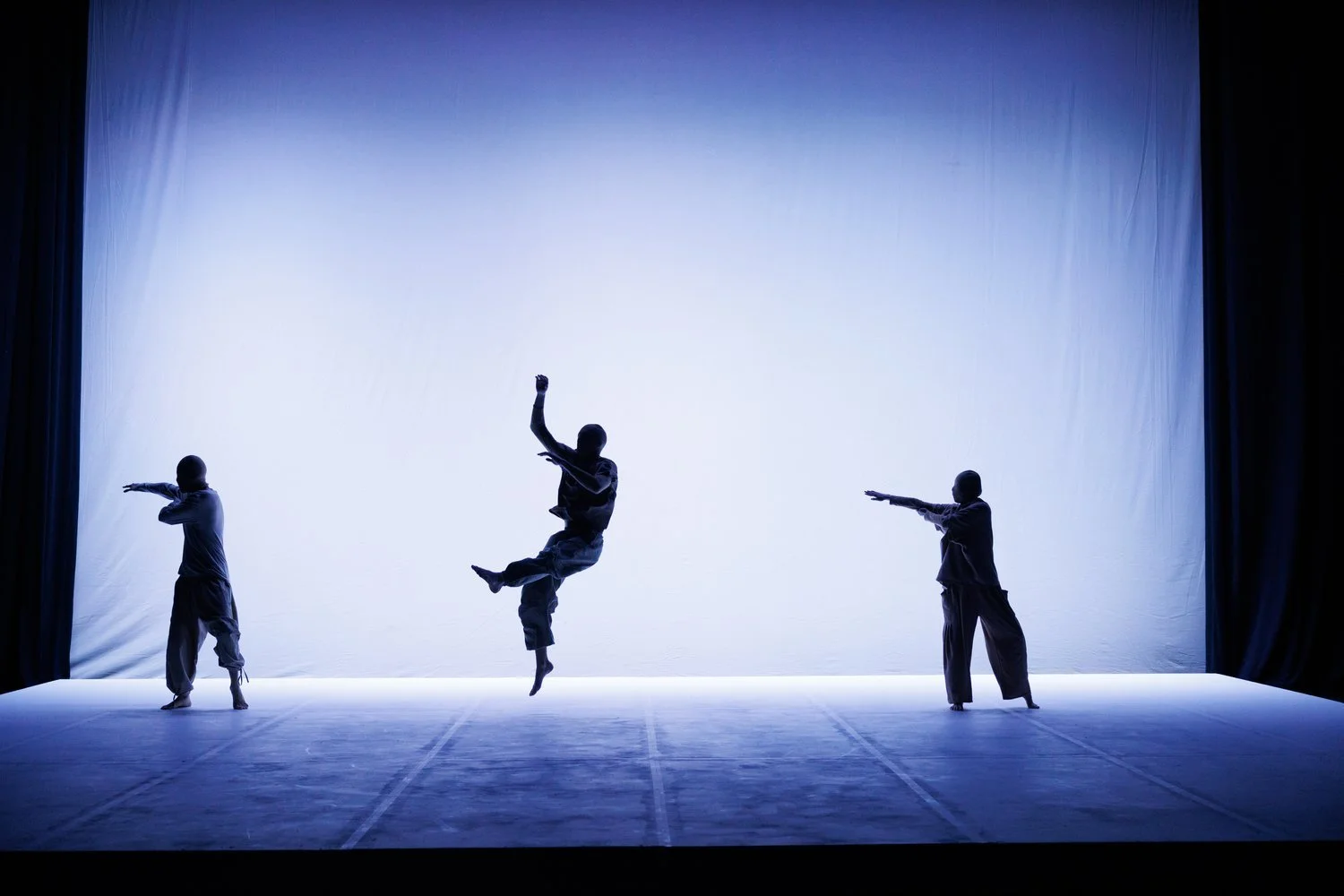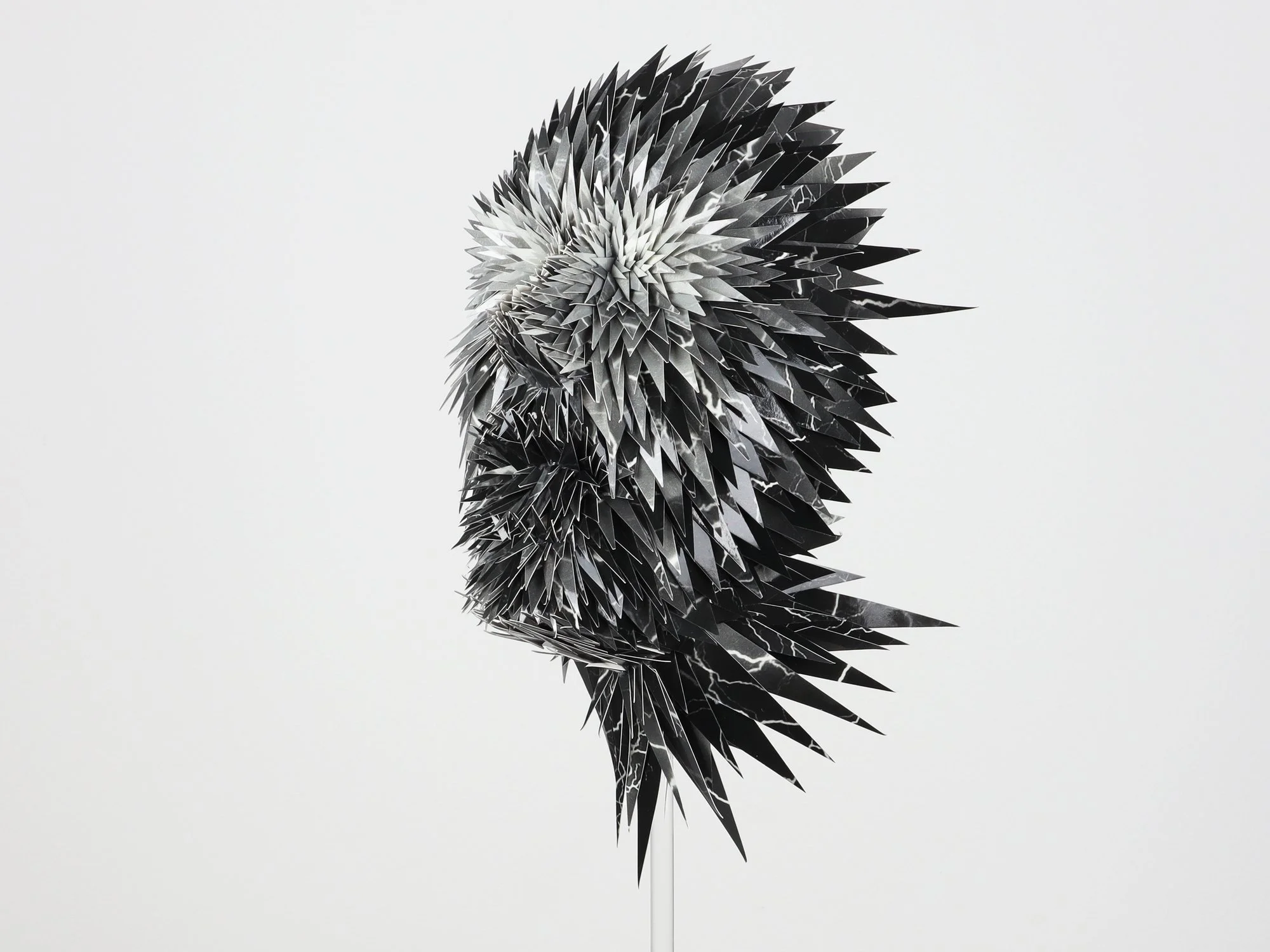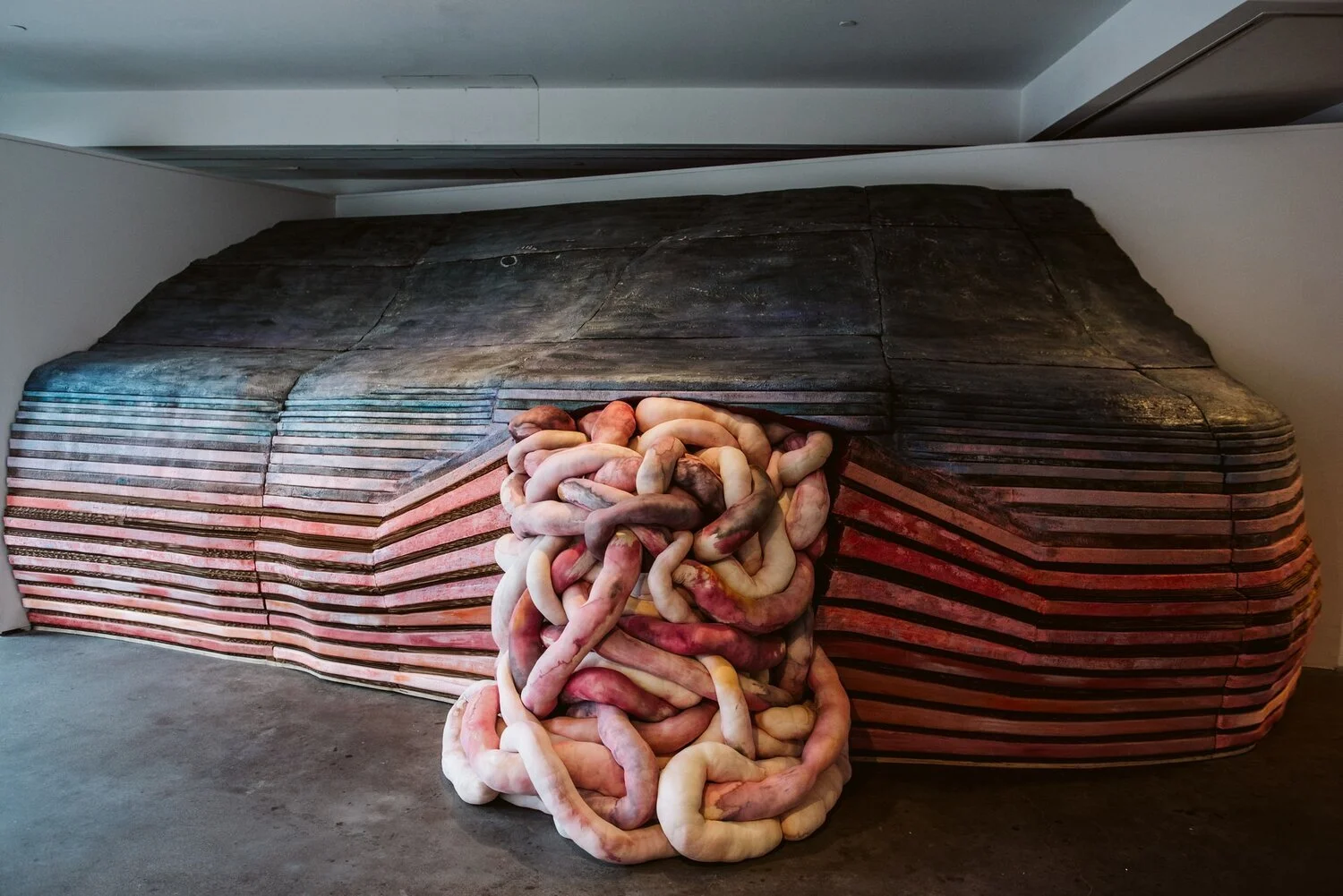Aomi Kikuchi’s work is based on Japanese aesthetic principles and the teachings of the Buddha, such as “Wabi-sabi” and “Mono-no-aware”. It addresses infinity as the succession of fleeting and brittle activities. With freedom and flexibility, she combines acquired knowledge and experiment and creates art to inspire dialogue and reflection on these concepts through materials and aesthetic philosophies.
Dr Gindi, Kant and the Encounter with the Sublime
A passionate thinker, notwithstanding being a grounded sculptor, Dr Gindi reflects a lot on the connection between philosophy and the arts. Apart from their stunning appeal, Dr Gindi’s sculptures ask the viewer to mirror the grammar of consciousness, investigate a core sense of sublimity outside of decay, and contemplate about infinite presence.
INTERVIEW | Ester Crocetta
Ester Crocetta is an Italian visual artist. Her latest project, CHICCHIRIA Poultry, is a summary of years of deep interior reflection. The concept of the CHICCHIRIA Poultry is the theme of “ANIMAL FOOD”. Our liberated, consumerist society is still struggling to evolve towards this new theme. History has caused us to reflect on the balance and harmony within nature, teaching new limits regarding the excessive consumption of meat.
INTERVIEW | Gøneja ✷
Gøneja ✷ is a photographer and totemic sculptor based in Berlin. His practice represents an artistic quest to establish a connection with the spiritual world and explore it within the boundaries of the contemporary urban context. He combines classical photography and totemic sculpture to unfold a new mythological narrative. Spirituality is a means to discern contemporary mythological possibilities and unravel them in his work as active magical forces.
INTERVIEW | Beatrice Spadea
Beatrice Spadea is a visual artist based in Italy. With her sensibility, the artist plays with the power of images to evoke surreal scenarios. Beatrice's work breaks through space and reveals an imaginative world that brings us beyond the heaviness of reality. Reconnecting with previously explored themes, at the beginning of 2022 Beatrice has created her first NFT collection of "Masks."
INTERVIEW | Thomas Behling
Thomas Behling is a German artist, born in Hanover in 1979. Modeled on found historical (authentic) objects, the objects by Thomas Behling pave the way for insight into the deception and transfiguration of appearances. In them, the viewer is confronted with the socio-historical memory and through specific filters and amplifiers with their private and subjective memory.
INTERVIEW | Ophira Spitz
Ophira Spitz is a multimedia artist based in Tel Aviv. With a past experience as a Geography teacher, she began making art in her 30s and has continued ever since. Her art includes painting, drawing, sculpture, and installation and is influenced by various aspects such as nature, the environment, and topography. Her work has a strong bond with cartography and geography, and she aims to merge and combine various worlds.
INTERVIEW | Rebecca Weisman
Rebecca Weisman is a conceptually driven maker and thinker who makes deconstructed films of sculptures that are then re-embedded into the sculptures creating dreamy installations with layers upon layers of visual narrative and meaning. Her project Skin Ego centers on an immense, eight by twenty foot sculptural reconstruction of a section of a Finback whale, modeled after a photograph found on the internet of a real-life stranded whale.
INTERVIEW | Patrícia Pinheiro de Sousa
Patrícia Pinheiro de Sousa is a visual artist and filmmaker based in Rotterdam, the Netherlands. She works with multiple mediums and disciplines, such as video, text-based works, performance, sound, and self-published books. She is interested in fragmented landscapes and how incomplete narratives affect collective memory, while her latest projects reflect an interest in future landscapes.
INTERVIEW | Marina Wittemann
Marina Wittemann is a Russian artist, currently based in Germany. Her art is inspired by the ability to perceive the world through complex experiences of color, space, and time. This volumetric pictorial color field is an opportunity to perceive events, feelings, and emotions through synesthesia. She works with paintings as well as sculptures and is influence by various different cultures and techniques.
INTERVIEW with Natalie Lambert
Natalie Lambert (b. 1995) is an interdisciplinary artist as well as the Curator and Founder of Toula Gallery. Natalie approaches her work from feminist theory. Her work is exploratory to herself and the environment she is in or has experienced. Through language and eroticism, Lambert provokes thoughts of objectification and challenges the stereotypes about gender politics, sex, and the body.
INTERVIEW | Manuel Seita
Manuel Seita is a Portuguese artist, based in Vila Verde de Ficalho (Portugal). His body of work is multidisciplinary and includes drawing, painting, sculpture, ceramics, video art and installation. He often works on an idea, with a certain material and during the process he is taken to other fields. His works are a reflection on the nature of the materials and how they can be worked.
INTERVIEW | Carolina Serrano
Carolina Serrano is a Portuguese artist whose artistic practice develops in the field of sculpture. Serrano’s theoretical research revolves around the sphere of the temporality of Sculpture. The artist is particularly interested in working on the disturbing and mysterious cleavage between what is real and what is illusory, between what is visible and what is invisible, between what is palpable and what is immaterial.
INTERVIEW | Marcello Silvestre
Marcello Silvestre’s artworks narrate the city through the emotions, the smells, the flavors and the noises. He relates the indissoluble relationship between man and city sculpting bodies, legs and arms on which he lets towers and houses arise in a continuous flow. He creates dreamlike visions and interweaving of soft lines, triangles and edges.
INTERVIEW | Ronit Keret
Ronit Keret’s recent work deals with the ecological crisis, the melting glaciers that have been changing due to the nature of human activity. The Installations that Keret creates are formed as a reaction to the given display space and the nature of the material she uses itself. Keret describes the transitions between good and evil in looking at human and nature relations and the gap between childhood dreams and catastrophic reality.
INTERVIEW | Cherrie Yu
Cherrie Yu is born in Xi'an, China. She currently lives and works from Chicago. Yu is the author of the Narrative Series is a series of videos in which classical narratives and characters were reenacted with thrift objects or foods. The narrative is chosen often signals a significant change to the characters selected, such as their marriage, death, exile, or injury.
INTERVIEW | Salomé Tamayo Hidalgo
Salomé Tamayo’s characters humorously celebrate the inconsistencies and peculiarities of social cannons. She plays with abstract and existential concepts to give concrete depictions of people being and living in their own way. By observing people, she looks for characters and stories entwined in everyday life. The collection is meant to bring people together through the real and the raw.
INTERVIEW | Rosinda Casais
Rosinda Casais combines architecture with sculpture. At the moment, she collaborates with Fahr 021.3 and studies sculpture at Faculdade de Belas Artes da Universidade do Porto. Throughout her career, she collaborated with different teams of architects, Atelier Peter Zumthor, Vinagre & Côrte-Real, Immopo and as a freelancer.
INTERVIEW | Mario Devcic
INTERVIEW | Cate Wind
Cate Wind creates sculptures and installations that reveal correlations between modern knowledge and ancient systems of belief. She assembles refined materials such as metal, glass, or resin with discarded found objects including gearwheels, vintage herbariums, or religious textiles. Fascinated by the interaction of materials with different feels and auras, her sculptures can be described as experiments that try to investigate the internal energies of various matters and how they affect each other.































